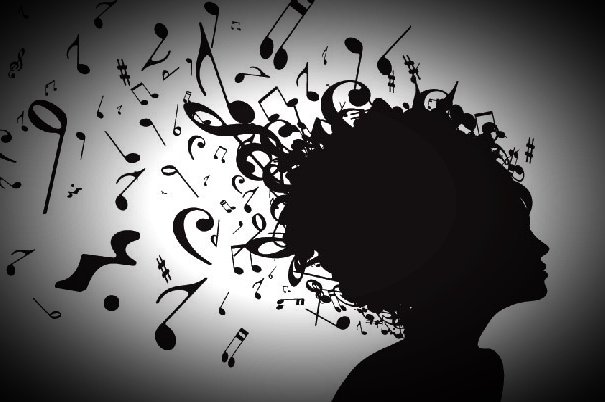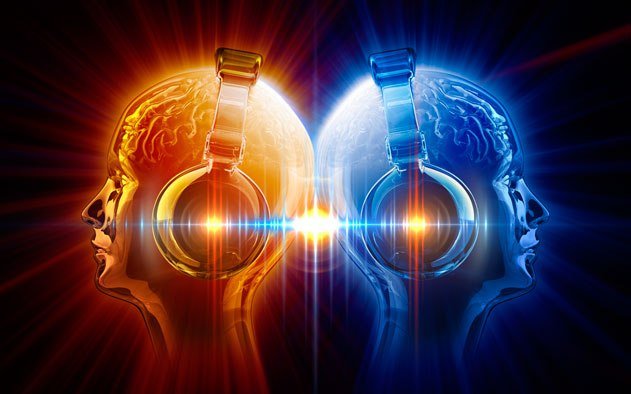Numerous artists have an intuitive comprehension of how melodic sound communicates with our bodies. They know — they feel — that sound effects our bodies in a way no other craftsmanship does. Musical drama vocalist Irene Gubrud says, "As an exceptionally youthful tyke, I encountered my identity through sound. I felt whole."Daniel Bernard Roumain, a youthful cross-kind violinist who is known as DBR, supposes one reason music is so capable is that sound really infiltrates our bodies: "You know when somebody says that a bit of music 'touched me' or 'moved me,' it's extremely strict. The sound of my voice enters your ear trench and it's moving your eardrum. That is an extremely insinuate act. I am actually touching you, and when you address me, you are truly touching me. And after that we stretch out that rule to the sound of a violin."
The conductor and piano player Daniel Barenboim trusts that our initial association with sound is another purpose behind its energy — one that in this day and age we infrequently overlook. He feels that since we live in an exceptionally visual society we're more mindful of what we see than what we hear. In any case, he advises us that the most recent logical proof uncovers that the ear, which we now know is dynamic in the womb, has favorable position over the eye. He additionally says: "The ear has a head begin once again the eye, which doesn't see anything until the point that it turns out. The eye is likewise something that one can control all the more completely. On the off chance that you don't care for the way I look, and you would prefer not to see me, you close your eyes and I vanish. However, in the event that you don't care for my voice and you're in a similar room, at that point you can't close your ears normally. Sound actually enters the human body."
This human relationship to sound begins early. The hatchling starts to build up a sound-related framework in the vicinity of seventeen and nineteen weeks. As of now, we are in a universe of sound, of breath and pulse, of musicality and vibration. In any case, how would we know what the embryo really hears? Up to this point, there were diverse hypotheses. A few specialists believed that the embryo could hear just a few frequencies, likely high ones. It unquestionably wasn't known whether we could hear and react to music before birth until the earth shattering exploration of Sheila Woodward, a South African, who needed to find out about melodic sound in the womb. She was a youthful researcher in the mid 1990's — and pregnant; she pondered what music her own youngster was being presented to before birth. In her examinations at the University of Capetown, she worked with the Institute of Maritime Technology to adjust a submerged receiver so it could be put in the uterus.

Her group thought of a modest waterproof hydrophone, around two inches in length, that specialists discovered sufficiently safe to put inside the womb. As a feature of Woodward's examination, this small mouthpiece was embedded through the cervix into the uterus of a mother in early work and put close by the neck of the unborn youngster. The mic recorded precisely what was capable of being heard inside the uterus as Woodward played music, sang herself, and had the mother sing. "The central issue," she says, "was, 'Does music truly exist in the womb and is it altogether different from the way we hear it in the outside world?'"As we tune in to the accounts that Woodward directed with a few moms in beginning times of work, we initially hear the cadenced sound of blood coursing through the uterine conduit. Says Woodward, "Nature enables us to develop with cadence surrounding us," And her accounts uncover that a scene of melodic sound does in fact encompass the baby. Alongside the characteristic womb sounds, we can hear the strains of a Bach Brandenburg Concerto being played, or the tune of "Mary Had a Little Lamb" as Woodward sings in an ordinary manner of speaking. The chronicles demonstrate that the high frequencies, similar to the sharp assault of an instrument, are weakened and sound somewhat muted. The general impact resembles tuning in to music submerged. Be that as it may, when tuning in to the human voice, one can at present recognize whether it's a lady or a man. What's more, the tonal nature of the voice comes through.
Because the sound of music exists in the womb doesn't really imply that the embryo hears it. However, the "startle reaction" of the embryo was estimated too, and Woodward's group discovered that when music is played, the fetal heart rate turns out to be somewhat raised. Woodward says it was obvious from the embryo responded, as though to state, "Something's happened and now there's music!" Other investigations demonstrate that regardless of whether just the mother hears music — on the off chance that she has earphones on, and it is music that she finds mitigating — the child's heart rate brings down while the mother is tuning in. On the off chance that the mother finds a specific bit of music distressing, the child's heart rate goes up. So the baby is resounding the mother's reaction to the nature of the music.

Woodward is persuaded that we start finding out about music even before birth. She brings up that notwithstanding when music that can enter the womb is missing, the baby is encompassed by those characteristic rhythms of the body — pulse and heartbeat and breath.
Congratulations @dhitalajay! You have completed some achievement on Steemit and have been rewarded with new badge(s) :
Click on any badge to view your own Board of Honor on SteemitBoard.
To support your work, I also upvoted your post!
For more information about SteemitBoard, click here
If you no longer want to receive notifications, reply to this comment with the word
STOPI like your musical
please upvote and follow me
I will make sure that i follow and upvote you.thanks @rahmimaulida
Great post
looking forward to your similar response in future also.Thanks @bhavesh18